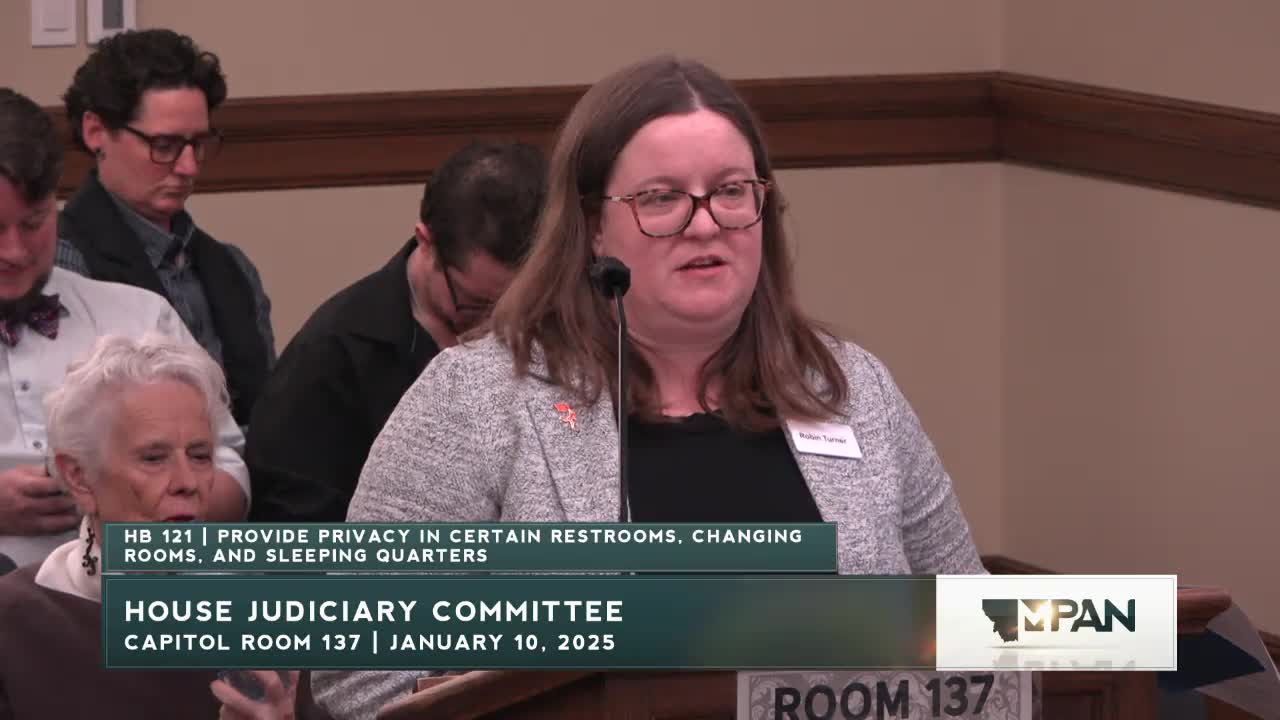Texas lawmakers clash over transgender bathroom access and safety concerns
January 10, 2025 | 2025 Legislature MT, Montana
This article was created by AI summarizing key points discussed. AI makes mistakes, so for full details and context, please refer to the video of the full meeting. Please report any errors so we can fix them. Report an error »

During a recent House Judiciary meeting in Montana on January 10, 2025, discussions centered around the complexities of gender identity and access to gender-specific facilities, particularly restrooms. The dialogue highlighted concerns regarding the safety of women in these spaces and the distinction between individuals who are genuinely transgender and those who may misuse access rights.
Representative Hinkle raised a question about how to differentiate between a person who is truly transgender and someone posing as such to potentially harm women. This inquiry sparked a significant response from other members, including Miss Turner, who emphasized that existing laws already address criminal behavior, such as assault and domestic violence. She argued that the focus should not be on creating new laws to distinguish between individuals based on gender identity, as the actions of individuals are already governed by criminal statutes.
The conversation revealed a tension between ensuring safety and respecting the rights of transgender individuals. Miss Turner expressed skepticism about the feasibility of distinguishing between individuals based on their gender identity, suggesting that such distinctions could lead to unnecessary complications and potential discrimination.
As the meeting progressed, Representative Griffith sought clarification from Mister Carlson, a professor present at the meeting, indicating that the discussion was not only about legal implications but also about the broader societal understanding of gender identity.
The meeting underscored the ongoing debate surrounding transgender rights and public safety, reflecting a community grappling with the implications of legislation on personal identity and security. As discussions continue, the need for clear, respectful dialogue remains crucial in addressing these sensitive issues. The committee's next steps will likely involve further exploration of these topics, as lawmakers seek to balance the rights of individuals with the safety concerns raised by constituents.
Representative Hinkle raised a question about how to differentiate between a person who is truly transgender and someone posing as such to potentially harm women. This inquiry sparked a significant response from other members, including Miss Turner, who emphasized that existing laws already address criminal behavior, such as assault and domestic violence. She argued that the focus should not be on creating new laws to distinguish between individuals based on gender identity, as the actions of individuals are already governed by criminal statutes.
The conversation revealed a tension between ensuring safety and respecting the rights of transgender individuals. Miss Turner expressed skepticism about the feasibility of distinguishing between individuals based on their gender identity, suggesting that such distinctions could lead to unnecessary complications and potential discrimination.
As the meeting progressed, Representative Griffith sought clarification from Mister Carlson, a professor present at the meeting, indicating that the discussion was not only about legal implications but also about the broader societal understanding of gender identity.
The meeting underscored the ongoing debate surrounding transgender rights and public safety, reflecting a community grappling with the implications of legislation on personal identity and security. As discussions continue, the need for clear, respectful dialogue remains crucial in addressing these sensitive issues. The committee's next steps will likely involve further exploration of these topics, as lawmakers seek to balance the rights of individuals with the safety concerns raised by constituents.
View full meeting
This article is based on a recent meeting—watch the full video and explore the complete transcript for deeper insights into the discussion.
View full meeting
